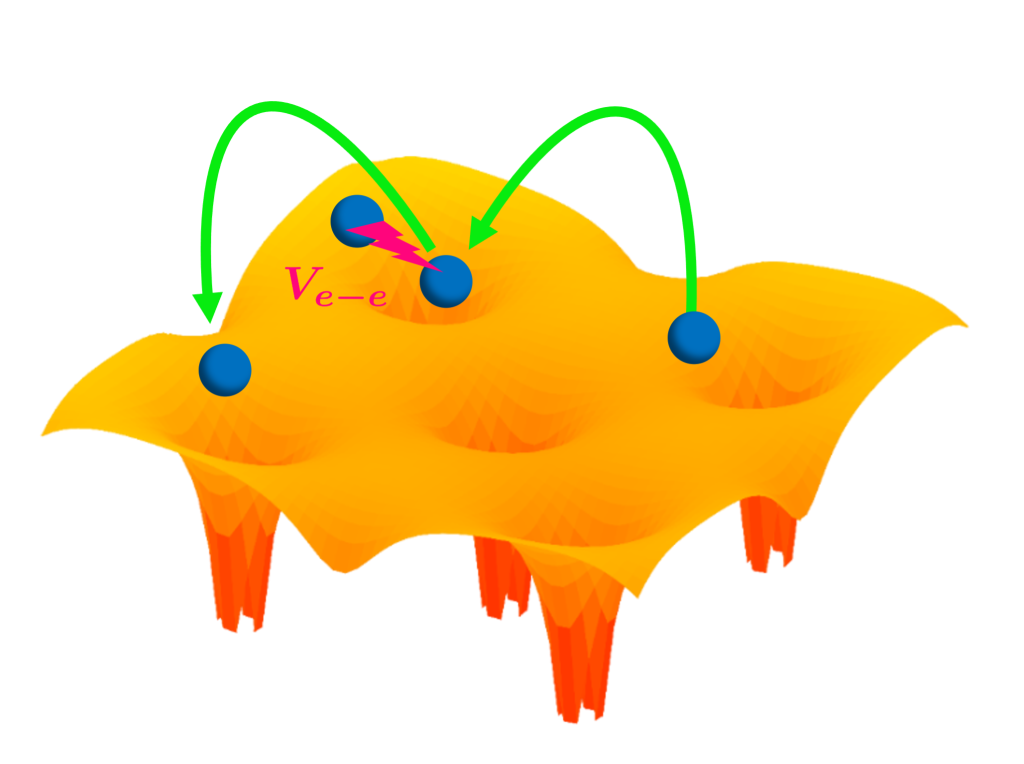
- This event has passed.
TYC DMFT mini-workshop – Correlations, Topology, and Entanglement in Materials
30 May @ 1:00 pm – 6:00 pm
Venue: Bush House SE 2.12
Dynamical mean-field theory (DMFT) and its extensions offer a non-perturbative description of electronic correlations, allowing us to elucidate the nature of the Mott transition and Kondo physics, to name just a few. With advancing methodologies and algorithms, we are now able to tackle phenomena beyond (standard) spectral and optical properties of correlated materials.
In this mini workshop, we will delve into the intricate interplay between correlations, topology and entanglement. Many-body physics can lead to new topological phases, in addition to challenging the stability of topological signatures (e.g., quantized currents) derived for non-interacting systems. In turn, correlations and entanglement have long been intertwined in quantum information theory. We will hear about topological Mott insulators and recent incursions of entropy measures into the realm of many-body physics, shedding new light on the correlated electron problem.
Preliminary Agenda
13:00-13:50 DMFT for the gifted amateur (Pre-workshop tutorial) – Jan M Tomczak
14:00-15:00 Mott insulators with boundary zeros – Giorgio Sangiovanni
15:00-15:15 Coffee Break
15:15-16:15 Quantum and classical correlations close to a Mott insulator – Giovanni Sordi
16:15-16:30 Break
16:30-16:50 The Hall conductivity in correlated electron systems — Georg Rohringer
16:50-17:10 Axion quasiparticles in magnetic topological insulators, and their role in detecting dark matter — David J. E. Marsh
17:10-17:20 Break
17:20-17:40 Topological quantum chemistry from a localised basis set perspective — Emanuele Maggio
17:40-18:00 Superconductivity and Mottness in Organic Charge Transfer Materials — Thomas Schäfer
Speakers
Mott insulators with boundary zeros – Giorgio Sangiovanni, Universität Würzburg, Germany
Abstract: In the recent literature, the concept of topological Mott insulator has been spelled out in quite different ways. Most of the proposed realizations rely either on Hartree-Fock approximations or on appropriately defined auxiliary degrees of freedom. I will discuss a novel, remarkably simple way of describing a topological Mott insulator without long-range order based on the topological properties of their Green’s function zeros in momentum space. After discussing the fate of the bulk-boundary correspondence in these systems, I will show how the zeros can be seen as a form of “topological antimatter” with distinctive features associated to the annihilation with conventional topologically protected edge modes.
Quantum and classical correlations close to a Mott insulator – Giovanni Sordi, Royal Holloway, University of London, UK
Abstract: Quantum and classical correlations among electrons in interacting systems generate remarkable phases of matter. Quantum information theory provides new concepts, based on the entanglement, for characterizing phases of matter and phase transitions in such systems. I’ll show that entanglement-related properties shed new light on the pseudogap and on the strongly correlated superconductivity emerging from a doped Mott insulator. I’ll review recent work on this problem in the context of the two-dimensional Hubbard model at finite temperature, solved with cluster dynamical mean-field theory and with a focus on key measures of correlations — thermodynamic entropy, local entropy, and total mutual information. I’ll show that the unveiled links between quantum and classical correlations provide a unified framework for the phenomenology of hole-doped cuprates and predictions for ultracold atoms loaded in optical lattices.
The Hall conductivity in correlated electron systems – Georg Rohringer – King’s College London
The Hall conductivity describes the response current perpendicular to the direction of an applied electric field which occurs in many-electron systems that are exposed to a transverse magnetic field. It has been found that in lattice systems this quantity is typically quantized and corresponds to a topological invariant of the band structure, i.e., the so-called first Chern number. Strictly speaking, such an exact correspondence holds only for non-interacting systems at zero temperature and the effect of correlations on the quantized Hall conductivity is still highly unclear. As a first step in this direction, we have calculated the Hall conductivity in the Hubbard model in a magnetic field by means of dynamical mean field theory (DMFT). Within this approach all purely local correlation effects are included by means of a local self-energy. We find that upon increasing the interaction strength between the particles the size of the quantized plateaus of the Hall conductivity is reduced and eventually vanishes.
This reduction of the Hall conductivity can be explained by a correlation driven shift of spectral weight to the -otherwise gaped- Fermi level which destroys the exact correspondence to the topological invariance and, hence, the integer quantum Hall effect. Interestingly, this mechanism is to a certain extent opposite to the suppression of the normal conductivity in an interacting electron systems which is driven by a transfer of spectral weight away from the Fermi level due to correlations.
Axion quasiparticles in magnetic topological insulators, and their role in detecting dark matter – David J. E. Marsh – King’s College London
An “axion” is a hypothetical fundamental particle that interacts with the electromagnetic Chern-Simons topological term. This term arises in topological insulators (TIs) that preserve inversion, P, and time reversal, T, symmetry as a manifestation of the topological magneto-electric effect due to Hall conductivity. Magnetic TI’s with broken inversion symmetry allow for the coupling of magnetic excitations to the Chern-Simons term and thus the existence of “axion quasiparticles”. In antiferromagetic TIs, axion quasiparticles correspond to the longitudinal AF magnon. Candidate materials include Mn2Bi2Te5 and Bi(Fe)2Se3. The axion quasiparticle can be detected by the Kerr rotation effect in optical or by observation of a THz gap due to formation of an axion-polariton in the presence of applied magnetic field. Typical AF energies in the meV range place axion quasiparticles in an interesting resonance band for use as detectors of the fundamental axion particle which may compose the dark matter in our galaxy.
Topological quantum chemistry from a localised basis set perspective – Emanuele Maggio – Scuola Superiore Meridionale, Napoli, Italy
The identification of topological materials has long been aided by computational discoveries of new phases of matter, in fact, to date the experimental contribution has been chiefly to confirm or disprove theoretical predictions concerning specific materials. Among the theoretical tools we can enumerate the calculation of topological invariants, which is quite computationally demanding, and for this reason, it has been integrated with different computational strategies, such as the evaluation of symmetry indicators, which may help restrict the palette of candidate materials for the successive evaluation of the topological invariants.
Among these, a clear signature is the presence of a band inversion, that is the behaviour of a Bloch state in the vicinity of a high symmetry point with respect to a particular symmetry operation, where the symmetry character is swapped between two Bloch states separated by an energy gap. In general, this is a telltale sign of a non-trivial topological material since it is not possible to define a global energy dispersion curve with the aid of labels that reflect the local transformation properties of the Bloch state in question.
This observation is at the core of the approach in the Topological Quantum Chemistry, where the search for topological materials fundamentally reduces to the identification of global dispersion relations, or to the impossibility to find any for a given energy curve. The chief inconvenience with current implementations of this method is that it is reliant on the mapping from plane wave basis functions to localised (Wannier) orbitals. In this contribution, I am presenting a more cogent computational approach, where the Bloch states can be constructed analytically starting from Gaussian type orbitals (GTO’s) –a widespread choice of localised basis set for many computational quantum chemistry software packages- hence superseding a computationally capricious step in the general algorithm.
Thanks to the analytic representation of Bloch states for each GTO type, it is possible to associate a local label to each of them, compounding the local information (such as orbital type and associated Wyckoff position) with the transformation properties under the symmetry group of the wavevector. Simple considerations about compatibility relations at different k-points allow for the expedite construction of global dispersion curves or, alternatively, for the identification of material candidates with a non-trivial topological electronic structure.
Superconductivity and Mottness in Organic Charge Transfer Materials – Thomas Schäfer – Max Planck Institute for Solid State Research, Stuttgart, Germany
The phase diagrams of organic superconductors assemble a plethora of fundamental phenomena of strongly correlated systems in two dimensions. We analyze a minimal model for these compounds, the Hubbard model on an anisotropic triangular lattice, by means of cutting-edge quantum embedding methods, respecting the lattice symmetry. We determine the crossover from a Fermi liquid to a Mott insulator by momentum-selective destruction of the Fermi surface reminiscent of a pseudogap. In the immediate vicinity of the metal-insulator crossover we demonstrate the existence of unconventional superconductivity by directly entering the symmetry-broken phase. Our results are in remarkable agreement with experimental phase diagrams of κ-organics for which we motivate future spectroscopic studies of hot and cold spots.

